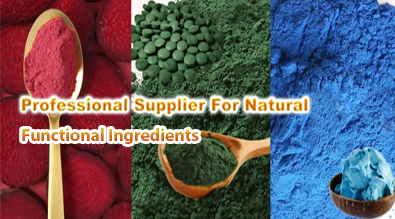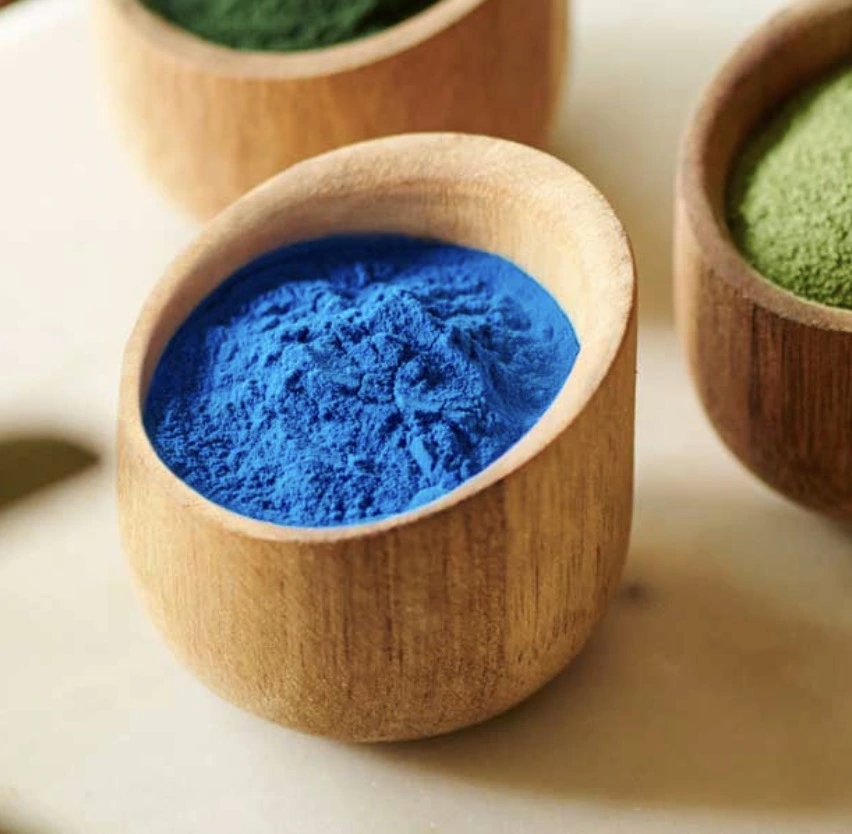How much astaxanthin per day?
Astaxanthin, a powerful antioxidant derived from the microalgae Haematococcus pluvialis, has gained significant attention in the health and wellness community. As more people discover its potential benefits, a common question arises: "How much astaxanthin should I take per day?" This comprehensive guide will explore the recommended dosages, best practices for consumption, and potential risks of excessive intake.\

Recommended Daily Dose of Astaxanthin
Determining the optimal daily dose of astaxanthin can be complex, as it depends on various factors including age, health status, and specific health goals. However, research and expert opinions provide some general guidelines:
General Population Recommendations
For most healthy adults, the recommended daily dose of astaxanthin ranges from 4 to 12 mg. This amount has been shown to provide significant antioxidant benefits without posing risks of adverse effects. It's important to note that these recommendations are based on studies using natural astaxanthin derived from Haematococcus pluvialis algae, which is considered the most potent and bioavailable form.
Dosage for Specific Health Concerns
Some studies have explored higher doses for particular health conditions. For instance, research on joint health and exercise recovery has utilized doses up to 16 mg per day. In cases of severe oxidative stress or specific health challenges, healthcare providers might recommend doses as high as 24 mg daily. However, such high doses should only be taken under professional guidance.
Astaxanthin for Athletes
Athletes and individuals engaged in intense physical activities may benefit from slightly higher doses. Some studies have shown positive results with 12 to 20 mg of astaxanthin daily for improving exercise performance and reducing muscle damage. These higher doses may help combat the increased oxidative stress associated with rigorous physical activity.

How to Take Astaxanthin for Best Results?
To maximize the benefits of astaxanthin supplementation, it's not just about how much you take, but also how you take it. Consider the following factors for optimal absorption and efficacy:
Timing of Consumption
Astaxanthin is a fat-soluble compound, which means it's best absorbed when taken with a meal containing healthy fats. Many experts recommend taking astaxanthin with your largest meal of the day, which often contains the most fat. This could be lunch or dinner for most people. Taking it with food not only enhances absorption but may also help mitigate any potential stomach discomfort.
Pairing with Complementary Nutrients
Certain nutrients can enhance the absorption and effectiveness of astaxanthin. Omega-3 fatty acids, found in fish oil or krill oil, have been shown to work synergistically with astaxanthin. This combination may provide enhanced antioxidant protection and support for eye and brain health. Additionally, vitamin E is another fat-soluble antioxidant that pairs well with astaxanthin, potentially boosting its overall antioxidant effects.
Consistency is Key
Like many supplements, the benefits of astaxanthin are most pronounced with consistent, long-term use. While some effects may be noticeable within a few weeks, many of the most significant benefits – such as improvements in skin health and reduction of oxidative stress markers – may take several months to fully manifest. Establishing a daily routine and sticking to it is crucial for experiencing the full spectrum of astaxanthin's benefits.
Is Too Much Astaxanthin Harmful?
While astaxanthin is generally considered safe, it's natural to wonder about the potential risks of excessive intake. Understanding the upper limits and possible side effects is crucial for safe supplementation.
Upper Tolerable Limits
Research has not established a definitive upper limit for astaxanthin intake. Studies have used doses as high as 100 mg per day for short periods without reporting significant adverse effects. However, most experts recommend staying within the 4-24 mg range for long-term daily use. It's always prudent to start with a lower dose and gradually increase if needed, under the guidance of a healthcare professional.
Potential Side Effects of High Doses
While rare, some individuals may experience side effects from high doses of astaxanthin. These can include:
- Skin pigmentation changes (a harmless orange tint)
- Increased bowel movements
- Mild stomach discomfort
- Changes in hormone levels (particularly at extremely high doses)
It's important to note that these side effects are uncommon and typically associated with doses far exceeding the recommended range. Most people tolerate astaxanthin well, even at higher doses.
Special Considerations for Certain Groups
Some populations should exercise extra caution when considering astaxanthin supplementation:
- Pregnant and breastfeeding women: Due to limited research, it's best to consult with a healthcare provider before using astaxanthin supplements.
- Individuals with autoimmune conditions: Astaxanthin's immune-modulating effects may interact with certain autoimmune conditions or medications.
- People taking blood thinners: High doses of astaxanthin may potentially interact with anticoagulant medications.
Always consult with a healthcare professional before starting any new supplement regimen, especially if you have pre-existing health conditions or are taking medications.

Conclusion
Determining the optimal daily dose of astaxanthin involves balancing potential benefits with individual needs and safety considerations. For most people, a daily dose of 4-12 mg provides significant antioxidant support without risk of adverse effects. Higher doses may be beneficial for specific health concerns or athletic performance, but should be approached cautiously and preferably under professional guidance.
Remember, the key to reaping the full benefits of astaxanthin lies not just in the dosage, but in consistent use, proper timing, and pairing with complementary nutrients. As with any supplement, it's crucial to source high-quality products from reputable manufacturers. If you're considering adding astaxanthin to your health regimen, consult with a healthcare provider to determine the most appropriate dosage for your individual needs.
For more information on high-quality astaxanthin powder supplier and personalized recommendations, feel free to contact us at info@yanggebiotech.com. Our team of experts is ready to assist you in making informed decisions about your health and wellness journey.
FAQ
Q: Can we get some samples to test before purchasing?
A: Of course, we can provide free samples of 20 to 100 grams, but the shipping cost is at the customer's expense. The shipping cost can be deducted from the next order, or the samples can be sent through your courier account.
Q: Do your products have relevant certifications?
A: Yes, our products are certified for HALAL, ISO, HACCP, Kosher, and other certifications.
Q: What is the minimum order quantity (MOQ)?
A: Small batches of samples can be customized according to your requirements.
Q: Do you offer OEM and ODM services? Can the formula be customized based on our own?
A: Of course, we provide ODM and OEM services to many customers. Our product range includes softgels, capsules, tablets, sachets, granules, and private label services. Simply contact us and let us know your requirements. Our experienced R&D team can also develop new products with specific formulas.
Please contact us to design your own branded products.
Q: How do you handle quality complaints?
A: First, we have a comprehensive quality control SOP. We provide authoritative third-party inspection reports for almost all products before shipment to minimize the possibility of quality issues. Second, we have a comprehensive return and exchange procedure. If there is a genuine quality dispute, we will strictly follow the SOP.
Q: How do you ship? How long does delivery take?
A: For small orders, we typically use DHL, UPS, EMS, FedEx, or TNT. Delivery typically takes 3-7 days. We also offer air and sea freight services. We have a strong freight forwarding team and can provide you with a one-stop service, including DDP and DDU.
Q: What are your payment terms?
A: 100% prepayment, payable by T/T, Western Union, MoneyGram, or PayPal.
Q: What is the shelf life of your products?
A: 2 years with proper storage.
Q: Is the packaging environmentally friendly?
A: We attach great importance to environmental protection and are constantly improving our product packaging. Some products are packaged in recyclable paper. Packaging materials are carefully selected to ensure product safety during transportation and storage, and to minimize environmental impact. We are committed to achieving a balance between environmental friendliness and practicality in our product packaging, and to contributing to sustainable development.
References
1. Brown, D. R., et al. (2019). "Astaxanthin in Exercise Metabolism, Performance and Recovery: A Review." Frontiers in Nutrition, 6, 76.
2. Fassett, R. G., & Coombes, J. S. (2011). "Astaxanthin: A Potential Therapeutic Agent in Cardiovascular Disease." Marine Drugs, 9(3), 447-465.
3. Ambati, R. R., et al. (2014). "Astaxanthin: Sources, Extraction, Stability, Biological Activities and Its Commercial Applications—A Review." Marine Drugs, 12(1), 128-152.
4. Davinelli, S., et al. (2018). "Astaxanthin in Skin Health, Repair, and Disease: A Comprehensive Review." Nutrients, 10(4), 522.
5. Malmsten, C. L., & Lignell, A. (2008). "Dietary Supplementation with Astaxanthin-Rich Algal Meal Improves Strength Endurance – A Double Blind Placebo Controlled Study on Male Students." Carotenoid Science, 13, 20-22.

Based on your location and order quantity, you will have the opportunity to receive a limited time free shipping promotion!

Who we are


